Of the many aspects involved in designing wallpaper, one I find particularly satisfying is the creation of a pattern which, once repeated, becomes more than the sum of its parts; in the nature of the repeat you can create movement, dynamism, harmony and an immersive environment.
Since my first foray into pattern design as a freelance textile designer, I have come to notice patterns in my surroundings more than ever and of course nature, once again, provides the most beautiful, unusual and inspiring examples.

Plants feature in much of my work, providing a perfect excuse to visit my favourite place in London, Kew Gardens, in the name of research. Here I continually discover new species (new to me, anyway), their unique shapes and patterns never fail to inspire me. Even the seemingly simple leaf comes in such an array of forms, colours and arrangements, as my little leaf montage above and the gorgeous examples below demonstrate!



Cacti and succulents display a wealth of patterns and hues, something which has seen them widely represented in print design and illustration recently. It's easy to see how so many people have found inspiration in their weird and wonderful forms.

The greenhouses of Kew Gardens are home to thousands of tropical plants and trees, from the giant palms in the Victorian Palm House, to the tiny delicate orchids found in the Princess of Wales Conservatory, and all manner of marvelous species inbetween...offering endless opportunities for pattern discovery.

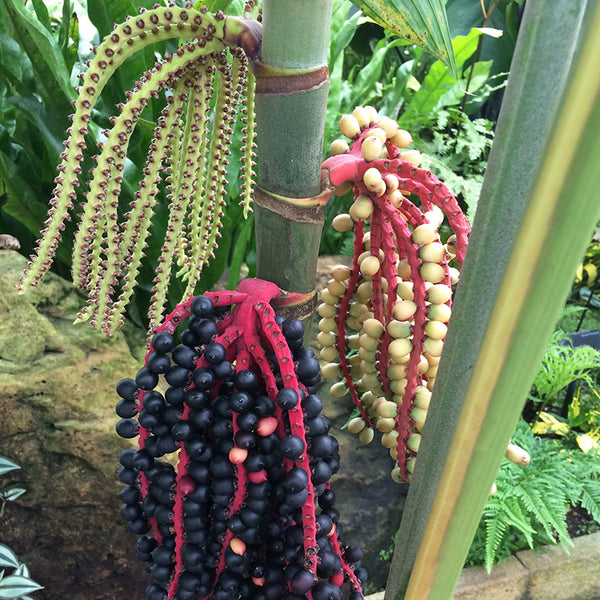

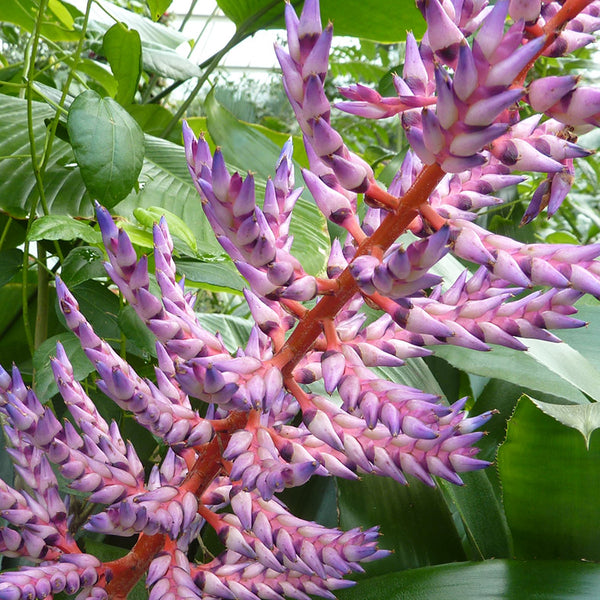


'I perhaps owe having become a painter to flowers'. Claude Monet, 1927.
Monet's enduring popularity means we're so used to seeing his paintings, particularly the water-lilies, reproduced on all manner of items, that it's easy to overlook just how magnificent they are in reality. This exhibition is simply stunning, and there is still time to go and see it! (It's on at the Royal Academy, London, until April 20th). While the primary focus is Monet, who's absolute love of nature is beautifully demonstrated and discussed, it's a very large exhibition with so many extraordinary paintings by numerous artists, including Cézanne, Klimt and Matisse.

Claude Monet, Crysanthemums (crop), 1897
The above painting is one of my favourite examples of Monet's exquisite use of colour; if you imagine it without just one of any of his chosen hues it wouldn't be nearly as effective. The exhibition explains that he took inspiration for these extreme close-ups from Japanese paintings and prints, citing Katsushika Hokusai (below Flowers, Peonies and Butterfiles, 1830s), as an example. These close-ups paved the way for his Grandes Décorations of later years; huge paintings of his water-lily garden in which the interplay between light, colour and atmosphere are of much greater importance than depiction of the forms.


Claude Monet, Water Lilies, 1916-1926
These paintings took the impressionists' 'art based on sensation' (a phrase coined by Camille Pissarro) to a new level, and there is something deeply peaceful and contemplative about experiencing them in all their expansive glory - it is the first time that the three enormous Water Lilies, painted as a triptych between 1915 and 1926, have been exhibited together in Europe. I later discovered that Monet's Water Lilies series included 250 paintings, such was his affinity with this part of his garden; he did claim that the garden at Giverny was 'my most beautiful work of art', after all.
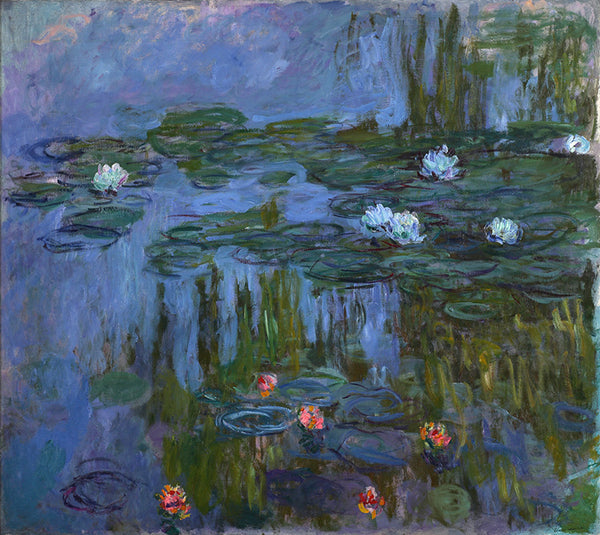
Claude Monet, Water Lilies, 1914-1915
The exhibition also provides a really interesting background to how gardening became the favoured pass-time we know it as today, something I had never considered, due to the 'Great Horticultural Movement', which coincided with the growth of the middle classes and advances in science and technology. In 1898, the President of the Society of American Florists is quoted as saying:
Show me one who cultivates flowers...and I will show you a home in which love prevails...
It was also at this time that gardens as public attractions became fashionable, a legacy to the Movement I am personally very happy about! I've since read more about the garden at Giverny as it is today and it's firmly on my must-visit list now. The intention of the gardeners there is to engender in the visitor the same emotions they might feel on viewing a Monet painting, by planting to maximise the impact of light, colour and atmosphere - it sounds wonderful.

Santiago Rusiñol, Hydrangeas on a Garden Path, 1929
It's always lovely to discover new artists at an exhibition and Santiago Rusiñol is one I was previously not aware of but his work stood out, for me personally. The way he captures sunlight in his garden paintings evokes how it feels to be outdoors, surrounded by nature, on a perfect sunny morning or evening, when the light makes everything look a little magical; something I really relate to as that is how I would spend much of my time if I could!

Santiago Rusiñol, Green Wall, Sa Coma, 1904
Painting The Modern Garden takes artists' fascination with gardens through to the early days of Modernism and the avante-garde with works from Matisse, Macke, Dufy and Kandinsky, amongst others. Here are the beginnings of abstraction, and there are some striking examples from artists often better know for different subjects and styles.
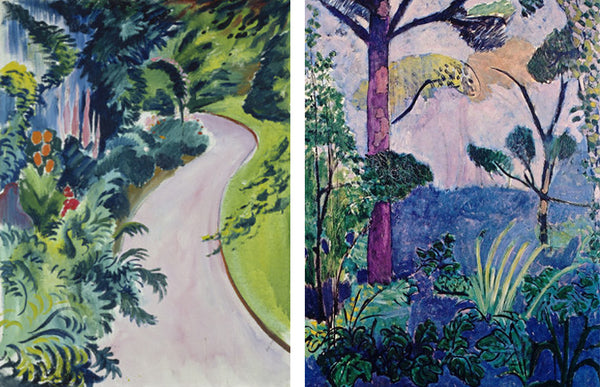
August Macke, Garden Path, 1912 and Henri Matisse, Acunthus (Moroccan Landscape), 1912
I can't recommend this exhibition enough, it's a beautiful reminder to take the time to appreciate the spectacle of the natural world and, thereby, allow ourselves to be moved by it, as the artists exhibited so clearly were.
I was happy to see one of my own little fascinations as an illustrator - deckchairs (it's something about the shape and the association with relaxation) - included in a painting by P.S. Krøyer, and I'm looking forward to embracing the modern garden in my own way as the years go by.

P.S. Krøyer, Roses (Marie Krøyer Seated in a Deckchair in the Garden by Mrs Brenden's House), 1893
For as long as I can remember, my imagination has been totally captured by nature and the countryside, (despite never actually living in it) and it will always have a huge influence on my work.

As a child I loved looking at nature books before I was able to read them, going to the garden centre was a fun day out, and I would spend hours collecting shells on trips to the French Coast (my mum is French). I kept tiny snails temporarily as pets in an elaborate home I had constructed for them, and remember aged 11 or 12 walking home from school and buying myself a hyacinth plant from the local greengrocers; they are still one of my favourites but looking back, I don't think many children my age saw fit to spend their pocket money on perennial plants.

Picture books which depicted the countryside were also a constant source of wonder for me, and before I had really experienced much of it myself they provided endless inspiration for my childhood drawings - I spent A LOT of time drawing. Even an illustrated puzzle we had, of some mice playing in the garden of a thatched cottage, played a role in my decision that when I grew up I wanted to live in cottage with roses growing up the walls (this hasn't quite happened, maybe one day!) and many of my drawings consisted of cosy, country scenes. I pretty much wanted to live in Brambley Hedge or by The Riverbank with Ratty and Mole!


Below are illustrations from some of my favourite picture books set in the countryside. (The Lovely Present, Maurice Sendak; Wind in the Willows, Kenneth Graham, illustrated by Inga Moore; The Four Seasons of Brambly Hedge, Jill Barklem).
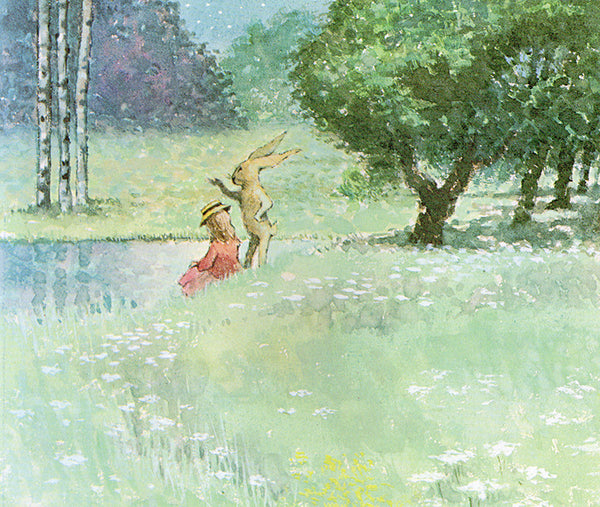



Naturally, my love of nature regularly surfaces in my work. Peonies were my favourite garden flower as a child so I happily included them in my Thumbelina - a fairytale by Hans Christian Andersen - inspired children's wallpaper, along with fritillaries (and more) which featured in a botanical colouring book I was given, many years before I saw some in reality at a Royal Horticultural Society show. Renn Designs Big Cats wallpaper is full of tropical plants I have seen on my many visits to the wonderful Kew Gardens.


While working in a book shop a few years ago, I bought a battered book in the sale for 99p called The Sky and the amazing Northern Lights photographs inspired me to create my Northern Lights children's wallpaper, in which I wanted to capture some of the beauty and magic of nature and Space.

A happy customer and lovely friend sent me this wonderful photo of her son appreciating his Northern Lights wallpaper in his bedroom. She said he notices something new every day and I very much hope his young imagination has been captured by my design, in the way that mine was, and still is, by nature and beautiful depictions of it.
































